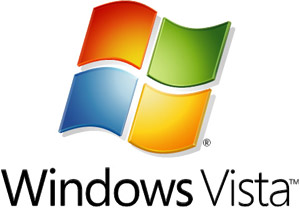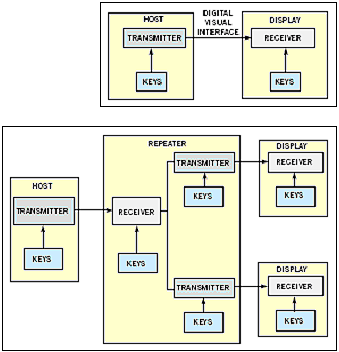Part of the feature set of Microsoft's upcoming Windows Vista (ne Longhorn)
operating system is support for High-Definition (HD) content, either through
television signals, HD or Blu-Ray DVDs, or Internet video. Along with this
support though, is a new set of restrictions designed to ensure the sanctity of
HD content and protect it from copying.
HDCP (High Definition Copy Protection) is a new method of encrypting the
digital (DVI) signal between the origin of the signal (receiver) and the display
device. The standard was developed for the home theatre market first, for
the purpose of ensuring that digital HD content could not be successfully
captured and copied between the HD receiver and the television set that displays
the signal.
Microsoft, as you might imagine, intends to support
HD DVD and video on all its current operating systems,
especially the upcoming Windows Vista. To this end, the company is building support
for HDCP into the operating system as part of its suite of DRM (Digital Rights
Management) abilities called Output Content Protection Management (OCPM).
This fact has caused an outcry in the media and the computing community,
since HDCP-enabled monitors will apparently be required to view High-Definition
DVDs and other encoded content. This outcry is not necessarily justified,
missing the facts that a) there's no guaranteeing that HDCP is going to take off
as a standard for high-definition copy protection, and b) if it does, it's not
just going to be Microsoft boxes that require HDCP monitors and TVs for full
HD-DVD playback, it's going to be every new DVD player and cable/satellite
receiver.
 To clarify the issue
somewhat, PCSTATS is going to look at the DRM features of Windows Vista and what
they may mean to users in the future. Pay close attention, the literal meaning of many of these not very
positive control systems are hidden behind a wall of achronyms which quickly become confusing.
To clarify the issue
somewhat, PCSTATS is going to look at the DRM features of Windows Vista and what
they may mean to users in the future. Pay close attention, the literal meaning of many of these not very
positive control systems are hidden behind a wall of achronyms which quickly become confusing.
Microsoft's Output Content Protection Management
for Vista
Three years ago, Microsoft helped spawn a 'trustworthy computing' initiative called Palladium.
In partnership with Intel, AMD and others, the platform
attempted to define a variety of standards which would allow content providers to
be sure that only 'trusted' hardware and software would run their encoded
media, be it movies, music or software.
To simplify the concept, MS was looking to turn Microsoft-powered systems
into copy-free environments, since programs capable of duplicating media would
be locked out. The idea was that you could run the media, or run your
non-palladium approved DVD duplication program, but not both at the same time.
Palladium was changed to Microsoft NGSCB (Next Generation Secure Computing
Base) shortly afterwards, to deflect some of the controversy that the initiative
had stirred up. Relatively little has been heard about it since, as
attention has shifted to other forms of DRM like the license based copy
protection on purchased digital music files from Itunes and other vendors.
 With the release of Windows Vista, some of the
ideas behind the original Palladium/Next Generation Secure Computing Base
initiative seem set to be put into motion.
With the release of Windows Vista, some of the
ideas behind the original Palladium/Next Generation Secure Computing Base
initiative seem set to be put into motion.
Microsoft's OCPM suite, part of the new operating system, comprises several
video and audio encrypting functions with the stated aim of allowing content
providers to trust the PC as a medium for playing their products without fears
of illegal copying. Sounds familiar...
Protecting
copyrighted 'premium content' will be accomplished both by confirming an 'approved state' for each computer, free
of potentially piracy-enabling software and hardware, and by encrypting certain types of media
as they make their way through the computer.
Using the same principle as VPNs passing encrypted
information over the Internet, a portion of OCMP will ensure that the data from
a HD DVD or other content is encrypted as it passes between the source and the
monitor/TV. Even if the encrypted data is captured, it cannot be used.
Obviously, in the current marketplace it's much easier for hardware and
content providers to co-ordinate protective measures on home theatre devices
which are by nature non-customizable. The almost infinite variability of
the PC has made it the centerpiece of media piracy and forced music and video
publishers into elaborate (and generally unsuccessful) attempts to restrict
user's abilities to copy their media.
Microsoft's main argument for the implementation of this restrictive new set
of security features is the possibility that the movie and music industries will
attempt to prevent their content from being used on any computer system.
Whether this is likely or indeed possible is an open question, but there's no
arguing that the PC is far and away the most common vector for illegal media
duplication.

